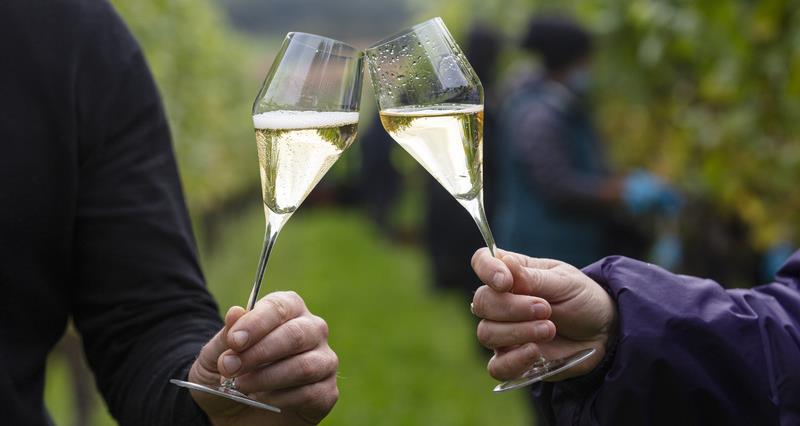The business runs 11 vineyards spread across the greensand and chalk soils of Sussex, Hampshire and Kent.
Ben Kantsler, who is originally from Australia, has worked as Nyetimber’s viticulturist since 2015.
“The farm planted vines in 1988, the first crop was in 1992 and then that wine was released in 1996 and won a trophy for best sparkling wine and that’s what kick-started the English sparkling wine industry,” says Ben. “We have been winning awards since then. We like to think that with each vintage we are striving to get better and better.”
It takes about three years before the planted vineyards are productive and about five years before they have a commercial yield on them.
How do you manage the vines?
It’s an annual crop. During the winter we prune all the vines back and lay down the new wood for next year. We have to be very careful that its productive wood and that we are putting the best base and framework down for the start of the new year.
There’s about 4,000 vines per hectare and we have more than 300ha, so it’s a skill you do learn over time. In real terms, a good pruner does allow us to get a good crop. We do prune quite late because we want to avoid the spring frosts, which are one of the critical issues for us in the UK climate.
Over winter we have Sussex sheep grazing the fields, in between the vines and they help to control the grass and the weeds in the mid-row. We have to get them out before bud bursts happens or they can eat the developing buds. They’re a good way of allowing us to have two uses of the farm during the off season.

How big a problem is the weather for vines?
We do get bits of frost in Hampshire and even in Kent, it’s just something nature throws at us and we are conscious we have to mitigate. We try and make sure the vineyards have everything in place to get the cold air away as quickly as possible.
Every site has a weather station that’s tied to alarms and we have a running rota of people working nights and days to make sure when something happens, we are ready for it.
Once picked what happens to the grapes?
At harvest time, the grapes get picked into crates and those crates make their way to the pressing centre and, as the name suggests, they go into a large press. We have special Champagne presses called Coquards and they are the gentlest presses on the market. Once the grapes have been pressed, clarified, fermented and blended, the wine is bottled and stored for anywhere between three and five years before it’s then available commercially.
